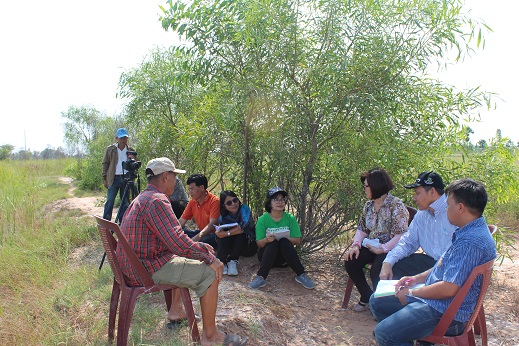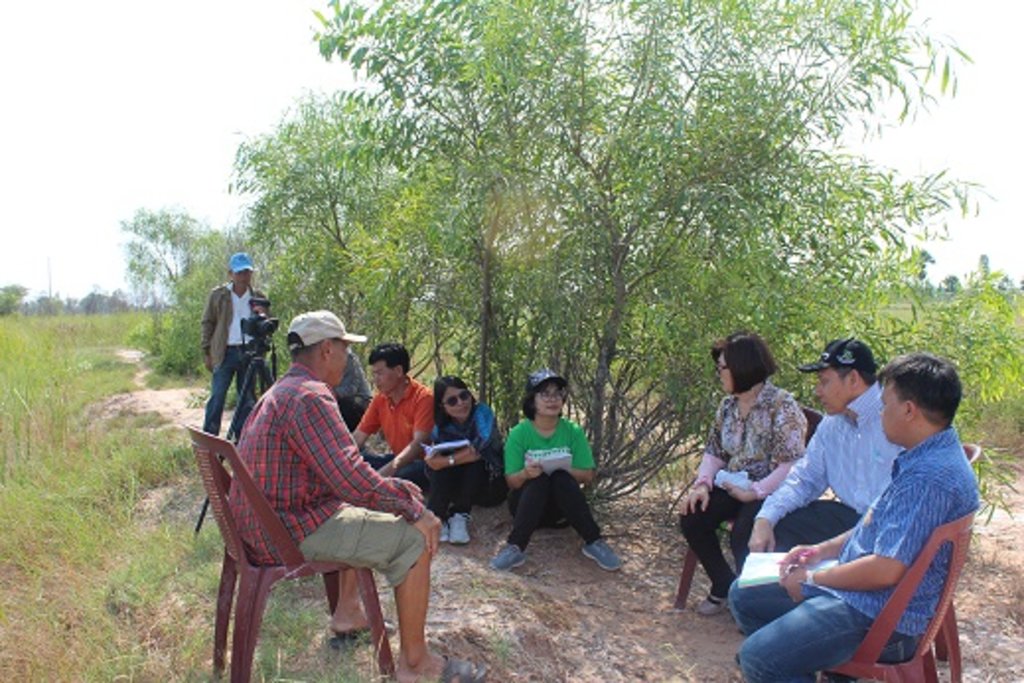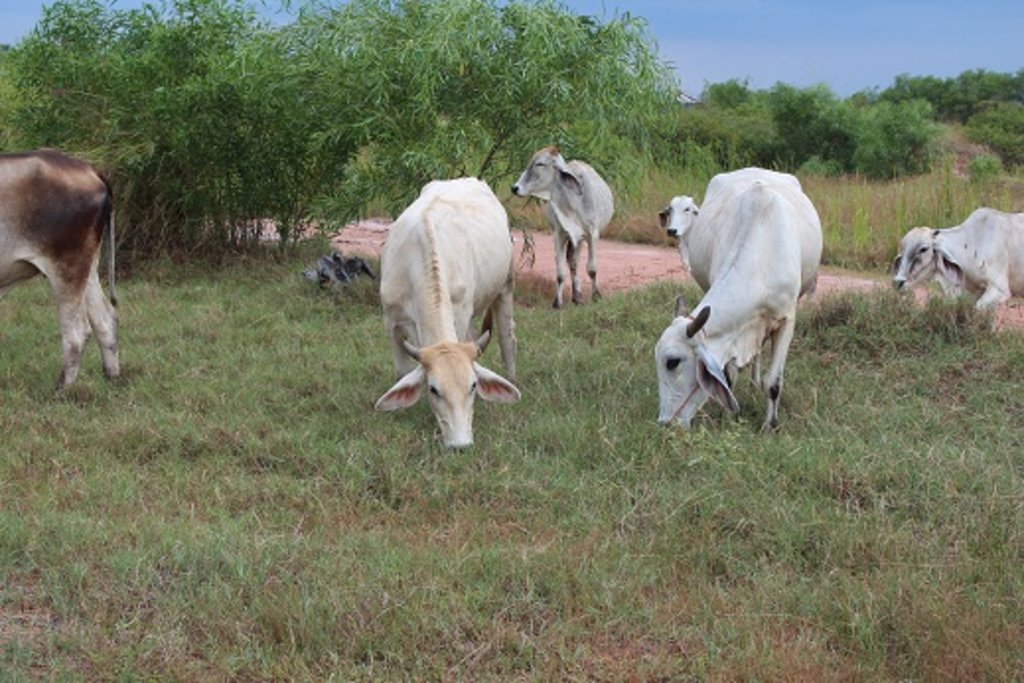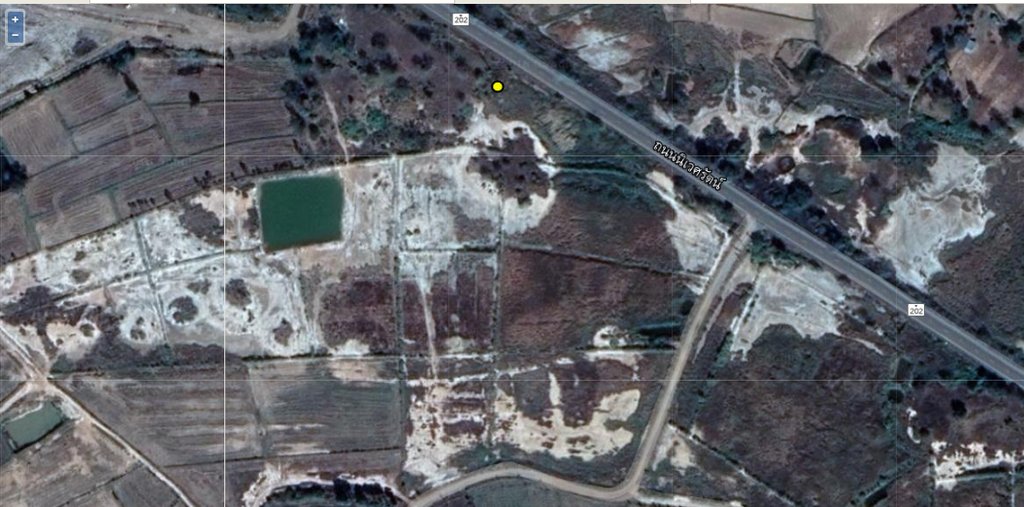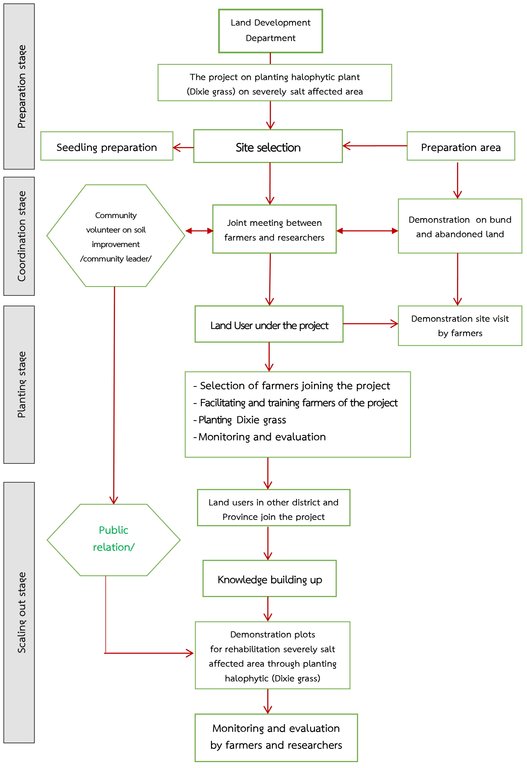Vegetative approach of using a halophyte ("Dixie grass", Sporobolus virginicus)) to rehabilitate severely salt-affected land. [Thailand]
- Creation:
- Update:
- Compiler: Kamontip Sasithorn
- Editor: –
- Reviewers: Rima Mekdaschi Studer, Samran Sombatpanit, William Critchley
approaches_4210 - Thailand
View sections
Expand all Collapse all1. General information
1.2 Contact details of resource persons and institutions involved in the assessment and documentation of the Approach
Key resource person(s)
land user:
Yooburi Somsak
+66-80-7240599
10 Moo 12, Ban Kut Chok, Kut Chok Sub-district, Buayai District, Nakhon Ratchasima Province 30120
Thailand
land user:
Sriwootpong Rungariam
+66-93-4613289
107 Ban Donpae Moo 8, Kut Chok Sub-district, Buayai District, Nakhon Ratchasima Province
Thailand
Department of Agricultural Extension officer:
Auonpokang Chiwat
+66-85-7783258
Buayai District Agricultural Extension Office
49 Buayai Sub-district, Buayai District, Nakhon Ratchasima Province 30120
Thailand
land user:
Kumtisong Noorian
+66-62-1524591
45 Moo 10, Dang-chang Sub-district, Buayai District, Nakhon Ratchasima Province 30120
Thailand
SLM specialist:
SLM specialist:
SLM specialist:
SLM specialist:
National consultant:
Name of project which facilitated the documentation/ evaluation of the Approach (if relevant)
Book project: where the land is greener - Case Studies and Analysis of Soil and Water Conservation Initiatives Worldwide (where the land is greener)Name of project which facilitated the documentation/ evaluation of the Approach (if relevant)
Book project: where the land is greener - Case Studies and Analysis of Soil and Water Conservation Initiatives Worldwide (where the land is greener)Name of the institution(s) which facilitated the documentation/ evaluation of the Approach (if relevant)
Land Development Department LDD (Land Development Department LDD) - Thailand1.3 Conditions regarding the use of data documented through WOCAT
When were the data compiled (in the field)?
18/10/2018
The compiler and key resource person(s) accept the conditions regarding the use of data documented through WOCAT:
Ja
1.4 Reference(s) to Questionnaire(s) on SLM Technologies
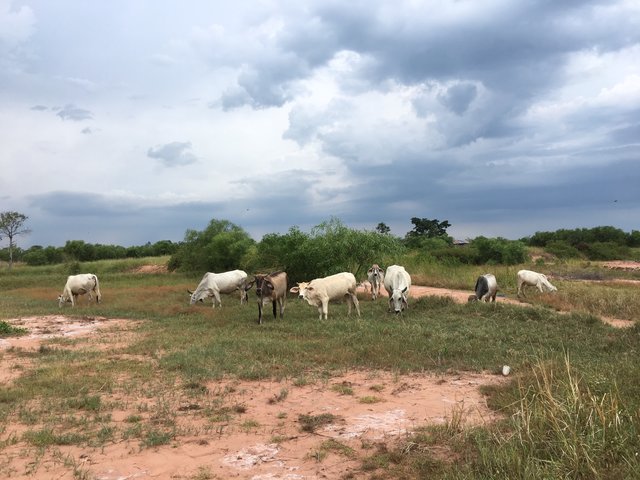
Planting a Halophyte (Sporobolus virginicus, "Dixie grass") to … [Thailand]
Planting a halophyte - Dixie grass (Sporobolus verginicus) - aims to increase the area of land usable by farmers and to prevent expansion of severely saline soils. Dixie grass can be utilised as cattle feed. The Land Development Department has been involved in developing and disseminating this technology.
- Compiler: Kamontip Sasithorn
2. Description of the SLM Approach
2.1 Short description of the Approach
The government promotes a halophyte (Dixie grass) to control severely salt-affected land, rehabilitate the ecosystem and prevent the spread of salt in soil - with the cooperation of land owners, livestock farmers, the local administration, the local government agency, Land Development Department researchers and with specialists/ technical advisors in various fields.
2.2 Detailed description of the Approach
Detailed description of the Approach:
The Ministry of Agriculture and Cooperatives through its Land Development Department (LDD) initiated a project on planting salt-tolerant trees and grasses on severely salt-affected land in the Northeast of Thailand in 1996. The project has facilitated the planting of a halophyte (a salt-loving plant), namely Sporobulus virginicus (Dixie grass) on salt-crusted and barren land. The main objectives of the approach has been to encourage land users to maximize their land area for farming, by preventing the formation of extensive severely saline soil. This is through planting Dixie grass as a cover crop to rehabilitate the land and ecosystem. The activities started with public meetings, then identifying severely salt-affected areas, and setting-up demonstration plots on farmers’ land to act as learning centers. There has also been communication with the local administration to call farmers’ meetings to develop detailed work plans and discuss strengths, weaknesses, opportunities, and threats of planting Dixie grass. The implementing activities consisted of 4 stages; PREPARATION was for seedling preparation, site selection of severely salt-affected soil and land preparation, public meetings and the establishment of the demonstration plot at Dan Chang Sub-district, Buayai District, Nakhon Ratchasima Province. COORDINATION included a joint meeting between farmers and researchers, joint monitoring & evaluation and follow-up and land users' decision-making. PLANTING started with selection of farmers joining the project, facilitating and training, a site visit to the model demonstration plot: this plot is the model for planting salt-tolerant trees and grasses on severely salt-affected land in the Northeast of Thailand. The final activity of SCALING-OUT occured when the land users/ farmers found that after 3 years of planting Dixie grass this barren land became covered by plants and much improved in biodiversity by the evidence of many varieties of wild grasses, flowers, dragonflies, small mammals and birds. Farmers could now grow rice and they used Dixie grass as feed for livestock. Moreover, and attractively, farmers were able to increase their incomes. Migration to big cities was reduced. The stakeholders were land owners, livestock farmers, the local administration, the local government agency, researchers and SLM specialists from LDD - and all worked together to mutual benefit. Nevertheless, although planting halophytes improves severely saline soil with low input costs, the recovery/accomplishment time (in saline soil improvement) cannot be as fast as that of engineering measures with much higher investment.
2.3 Photos of the Approach
2.4 Videos of the Approach
Date:
18/10/2018
Location:
6 Ban Donpae Moo 8, Kut Chok Sub-district, Buayai District, Nakhon Ratchasima Province
2.5 Country/ region/ locations where the Approach has been applied
Country:
Thailand
Region/ State/ Province:
Nakhon Ratchasima Province
Further specification of location:
6 Ban Donpae Moo 8, Kut Chok Sub-district, Buayai District
Map
×2.6 Dates of initiation and termination of the Approach
Indicate year of initiation:
2015
Year of termination (if Approach is no longer applied):
2016
2.7 Type of Approach
- project/ programme based
2.8 Main aims/ objectives of the Approach
The main objective of the approach was to enable and encourage land users to maximize land for farming, through preventing the formation of extensive severely saline soil, by the use of the halophyte, Dixie grass, as a cover crop.
2.9 Conditions enabling or hindering implementation of the Technology/ Technologies applied under the Approach
social/ cultural/ religious norms and values
- enabling
The land users follow what their neighbours practice.
availability/ access to financial resources and services
- enabling
Through the Bank for Agriculture and Agricultural Cooperatives.
institutional setting
- enabling
Local administration
collaboration/ coordination of actors
- enabling
Coordination of soil doctor volunteers and community leaders in the area.
policies
- enabling
The government has a policy of preventing soil degradation.
knowledge about SLM, access to technical support
- enabling
To provide knowledge to land users in the area.
workload, availability of manpower
- enabling
For land users under the project
- hindering
For land users outside the project
3. Participation and roles of stakeholders involved
3.1 Stakeholders involved in the Approach and their roles
- local land users/ local communities
Farmers under the project
Planting halophytes (Sporobolus virginicus - Dixie grass)
- community-based organizations
Local administration (Sub-district Administration Organization)
Call for meeting
- SLM specialists/ agricultural advisers
Land Development Department
Site selection
- researchers
Land Development Department
Provide technical recommendations
- national government (planners, decision-makers)
Land Development Department
Funding, planner, decision-makers
3.2 Involvement of local land users/ local communities in the different phases of the Approach
| Involvement of local land users/ local communities | Specify who was involved and describe activities | |
|---|---|---|
| initiation/ motivation | interactive | Land users in the project based |
| planning | passive | Discussion with land users on work plan before starting the activity. |
| implementation | external support | Land users/farmers in the project |
| monitoring/ evaluation | external support | Land users in the project |
3.3 Flow chart (if available)
Description:
Four stages of participating process of technology development among organizations, community volunteers on soil improvement, farmers, SLM specialists and researchers.
Author:
Kamontip Sasithorn
3.4 Decision-making on the selection of SLM Technology/ Technologies
Specify who decided on the selection of the Technology/ Technologies to be implemented:
- mainly SLM specialists, following consultation with land users
Specify on what basis decisions were made:
- evaluation of well-documented SLM knowledge (evidence-based decision-making)
4. Technical support, capacity building, and knowledge management
4.1 Capacity building/ training
Was training provided to land users/ other stakeholders?
Ja
Specify who was trained:
- land users
Form of training:
- demonstration areas
- public meetings
Subjects covered:
Prevention and rehabilitation of salt-affected land with available technology and increased income for farmers.
4.2 Advisory service
Do land users have access to an advisory service?
Ja
Specify whether advisory service is provided:
- on land users' fields
Describe/ comments:
1. Soil doctor volunteers represent the Land Development Department with a duty to provide knowledge to farmers in the area.
2. SLM specialists from Land Development Department visited and advised farmers in the area.
4.3 Institution strengthening (organizational development)
Have institutions been established or strengthened through the Approach?
- no
4.4 Monitoring and evaluation
Is monitoring and evaluation part of the Approach?
Ja
Comments:
SLM specialists from Land Development Department collaborated with LDD soil doctor volunteers in surveying the survival rate and following up the growth of plants in the area.
If yes, is this documentation intended to be used for monitoring and evaluation?
Ja
4.5 Research
Was research part of the Approach?
Ja
Specify topics:
- technology
Give further details and indicate who did the research:
The Soil Salinity Research Group, LDD, conducted research on "halophytes plantation and the flow path along the landscape in Northeast Thailand" with Dr. J.L. Gallagher from Delaware Biotechnology Institute, University of Delaware.
5. Financing and external material support
5.1 Annual budget for the SLM component of the Approach
If precise annual budget is not known, indicate range:
- < 2,000
Comments (e.g. main sources of funding/ major donors):
Land Development Department
5.2 Financial/ material support provided to land users
Did land users receive financial/ material support for implementing the Technology/ Technologies?
Ja
If yes, specify type(s) of support, conditions, and provider(s):
Dixie grass planting material and land preparation cost
5.3 Subsidies for specific inputs (including labour)
- labour
| To which extent | Specify subsidies |
|---|---|
| fully financed | Planting |
- other
| Other (specify) | To which extent | Specify subsidies |
|---|---|---|
| seeding | fully financed | free seedings |
If labour by land users was a substantial input, was it:
- paid in cash
Comments:
Due to the landowner having insufficient labor for grass planting, there is a need to hire workers at 175 THB/person/day (the minimum rate)
5.4 Credit
Was credit provided under the Approach for SLM activities?
Nee
5.5 Other incentives or instruments
Were other incentives or instruments used to promote implementation of SLM Technologies?
Nee
6. Impact analysis and concluding statements
6.1 Impacts of the Approach
Did the Approach empower local land users, improve stakeholder participation?
- No
- Yes, little
- Yes, moderately
- Yes, greatly
Generate food security and family income.
Did the Approach enable evidence-based decision-making?
- No
- Yes, little
- Yes, moderately
- Yes, greatly
Establish learning center for farmers as an information for technology adoption.
Did the Approach help land users to implement and maintain SLM Technologies?
- No
- Yes, little
- Yes, moderately
- Yes, greatly
Farmers well adopted the technology, resulting in the expansion of such Approach to a wider area.
Did the Approach improve knowledge and capacities of land users to implement SLM?
- No
- Yes, little
- Yes, moderately
- Yes, greatly
Farmers have adapted and changed SLM model to suit their own preference.
Did the Approach lead to improved food security/ improved nutrition?
- No
- Yes, little
- Yes, moderately
- Yes, greatly
Farmers can grow rice and they use Dixie grass as feed for livestock.
Did the Approach lead to employment, income opportunities?
- No
- Yes, little
- Yes, moderately
- Yes, greatly
The migration for job to big cities has reduced.
6.2 Main motivation of land users to implement SLM
- increased production
From the interview, farmers were satisfied with this technology of Sporobolus virginicus planting to rehabilitate severely saline soil. Besides being lower in salination farmers got more rice yields and better environment and livelihoods.
- reduced land degradation
After 3 years of planting Dixie grass, it was found that the formerly barren land became covered by plants and much improved in biodiversity by the evidence of many varieties of wild grass, dragonflies, small mammals and birds.
6.3 Sustainability of Approach activities
Can the land users sustain what has been implemented through the Approach (without external support)?
- yes
If yes, describe how:
Farmers have better understanding and positive attitude of planting halophytes (e.g. Dixie grass). Moreover, they have more income generated from rice yield and livestock, as farmers can now grow rice and used Dixie grass to raise livestock.
6.4 Strengths/ advantages of the Approach
| Strengths/ advantages/ opportunities in the land user’s view |
|---|
| Soil doctor volunteer, local government agency and community leader were the coordinators in the area. |
| Farmers had easy access to markets and sources of Dixie grass cuttings. |
| Distribution of Dixie grass cuttings was done at no cost. |
| Strengths/ advantages/ opportunities in the compiler’s or other key resource person’s view |
|---|
| A supported technique created to make better environment on severely saline soil in the Northeast of Thailand. |
| Technique in planting Dixie grass was provided continually by Land Development Department and community volunteers on soil improvement. |
| A demonstrated plot was established in the area. |
6.5 Weaknesses/ disadvantages of the Approach and ways of overcoming them
| Weaknesses/ disadvantages/ risks in the land user’s view | How can they be overcome? |
|---|---|
| Advertising of project was not extensive enough, particularly to the area of severely saline soil. | It is necessary for the Land Development Department to cooperate more closely with local administration to promote the project. |
| Weaknesses/ disadvantages/ risks in the compiler’s or other key resource person’s view | How can they be overcome? |
|---|---|
| Some farmers did not believe that Dixie grass was very salt tolerant and will make the salinity of the soil decrease after planting it. | The officers should build up knowledge from successful farmers by frequently visiting farmers in the area under the project "rehabilitation of severely salt-affected soil by planting Dixie grass". |
7. References and links
7.1 Methods/ sources of information
- interviews with land users
- interviews with SLM specialists/ experts
7.2 References to available publications
Title, author, year, ISBN:
Land Development Department
Available from where? Costs?
http://www.ldd.go.th/
7.3 Links to relevant information which is available online
Title/ description:
where the land is greener - Case Studies and Analysis of Soil and Water Conservation Initiatives Worldwide
URL:
https://www.wocat.net/library/media/27/
Title/ description:
where people and their land are safer - A Compendium of Good Practices in Disaster Risk Reduction (DRR) (where people and their land are safer) URL:
URL:
https://www.wocat.net/en/projects-and-countries/projects/drr
Links and modules
Expand all Collapse allLinks

Planting a Halophyte (Sporobolus virginicus, "Dixie grass") to … [Thailand]
Planting a halophyte - Dixie grass (Sporobolus verginicus) - aims to increase the area of land usable by farmers and to prevent expansion of severely saline soils. Dixie grass can be utilised as cattle feed. The Land Development Department has been involved in developing and disseminating this technology.
- Compiler: Kamontip Sasithorn
Modules
No modules


